For years, delivering the right content and monetizing the traffic with ads has been a top revenue source for every publisher. But off late, with audiences using ad blockers to get a better browsing experience, publishers are finding it difficult to track or analyze their behavior and offer relevant content and ads to their audience.
According to eMarketer, the Q1 of 2021 saw 35.2 million smartphone users with ad-blockers on mobile. And this adoption is only going to grow and continue to be a hindrance for publishers and their ad revenue.
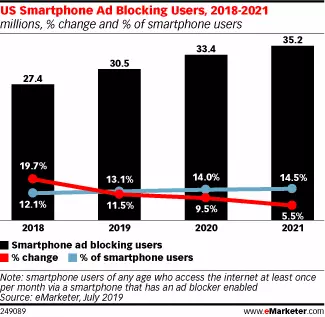
“Unless we don’t find a way to deliver relevant ads to the right people without negatively impacting their web experience, ad blocking will continue to rise toward the levels we’ve seen on desktop.”
– Simon Kvist Gaulshøj, V.P of international at AudienceProject.
Is this something that you need to be concerned about too? Yes, of course, if a significant portion of your traffic comes from mobile devices. Let’s start with the basics of mobile ad blocking and its effects on your revenue.
Table of Contents
What Is Mobile Ad Blocking?
Mobile ad-blocking is a technique used by visitors to block ads including videos, banners, pop-ups, and other types of intrusive ads. These techniques could either be software plugins or apps such as Adblock Plus, Adguard, and more.
Here are few reasons why users are blocking ads on mobile:
- Intrusive ads are considered a distraction to the content experience.
- To protect their privacy.
- Irrelevant or non-personalized ads.
Ad blockers also stop third-party scripts such as data providers, analytics providers, etc, from analyzing user’s behavior, track content performance, and more. The ad-blocking tools or software refer to a filtered blacklist in order to block the ads from the user’s device. Here’s a visual explanation of how ad blocking works:
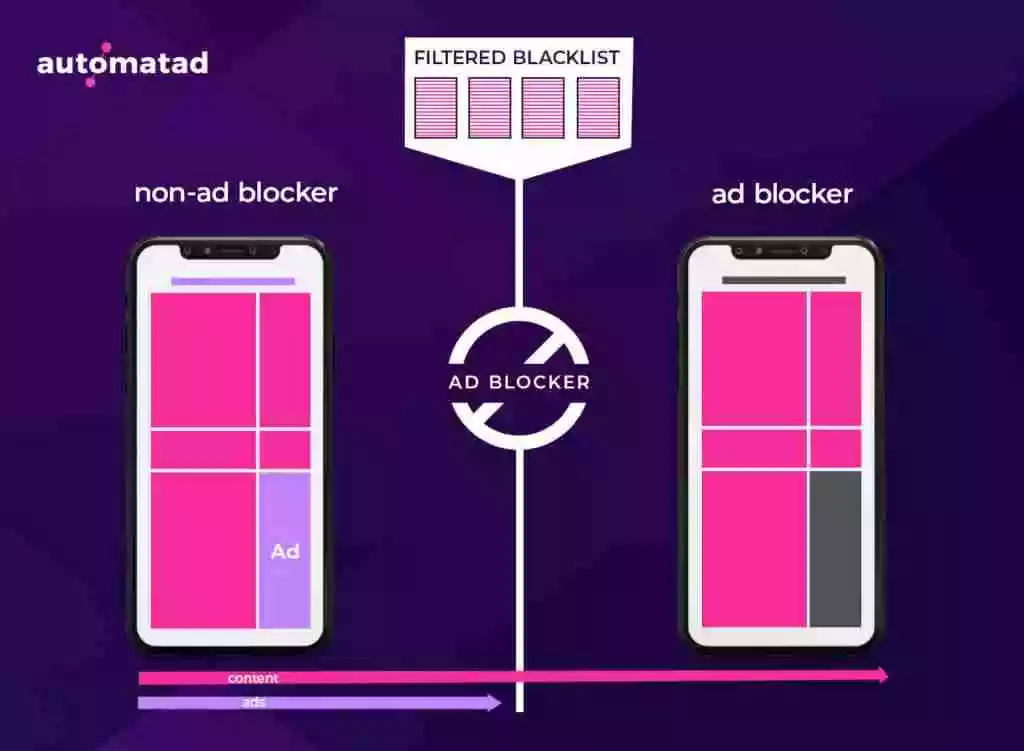
Different Types Of Mobile Ad Blocking Techniques
There are a variety of ad blocking techniques that the readers use to block the ads They are categorized into:
Web browsers with opt-in ad blocker extensions
Opt-in ad blocker extensions are one of the most common types that your readers use. Readers install and activate ad blocker extensions on their mobile devices to remove all types of ads. In general, When a reader with such ad blockers opens your website, the ad requests will be stopped and no ads will be displayed on that reader’s browser. Due to the presence of the extensions, you won’t be able to have any communication with the users or their information.
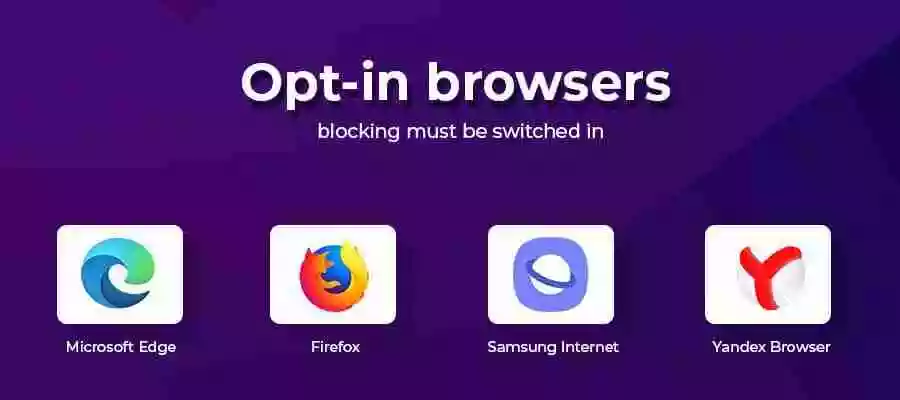
Mobile browsers that offer built-in ad blockers
Apart from installing a browser extension to block ads, readers also use browsers that have built-in ad blocking, privacy, and security features. Many mobile browsers, including UC Browser, Opera, etc., offer built-in ad blockers. Because of these blockers, you might not be able to serve ads.
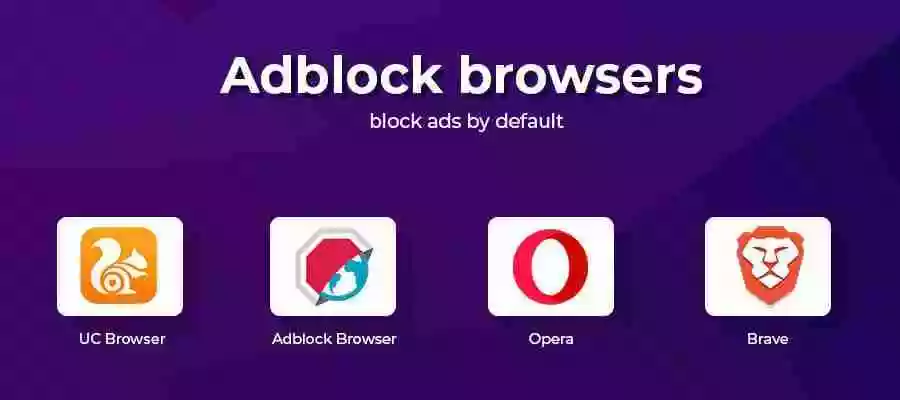
Mobile ad-blocking apps
Mobile Adblocking apps not just block ads within the browser but also block ads that appear everywhere apart from the browser such as mobile applications. AdGuard is one such standalone ad-blocking app that can be installed on Android and iOS devices.
VPN ad blocking techniques
VPN ad blockers disable ads on mobile web browsers by stopping or redirecting Domain Network System (DNS) requests. It prevents you from installing trackers on the reader’s device, thus stopping you from collecting any user’s data and blocking all the ads served by you.

Hardware ad blocking devices
Ad blockers such as AdTrap or PiHole use hardware to block online ads. While AdTrap uses a Linux Kernel to block ads, PiHole acts as local DNS to stop devices from showing ads.
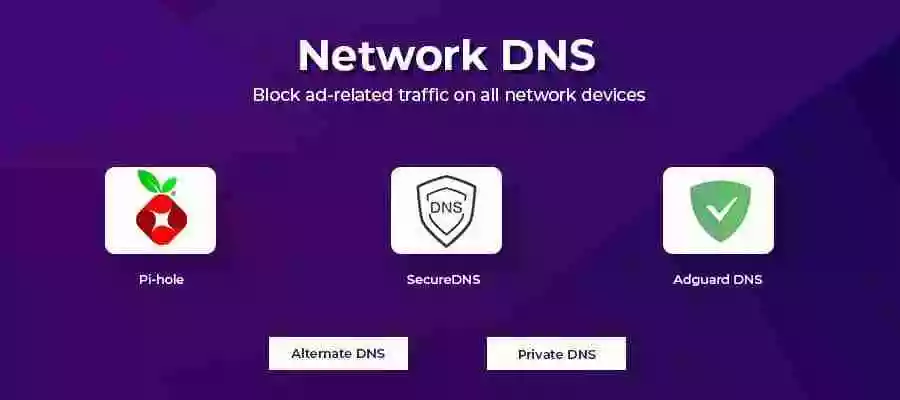
How Does Mobile Ad Blockers Work?
When a user with an ad blocker visits your website, the mobile ad blocker analyses your website source codes for any iframes, bad scripts, ads, and specific-sized images. It compares these source codes with the ad block list called Easylist.
EasyList is a filter that is used by many ad blockers to compare and remove unwanted ads. To identify what to block, ad blockers match the elements in this list. If matched, the blocker stops the ad requests and collapses the ad slots. While few ad blockers can differentiate between ads that are acceptable and non-acceptable, few don’t and block all ads. In case the ad blockers declare your ads as acceptable ads, then they will be shown to the users who allow such ads.
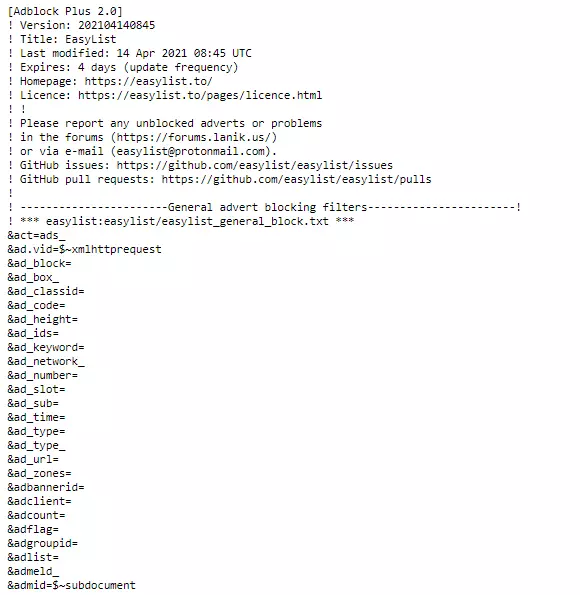
How To Minimize The Impact Of Mobile Ad Blocking?
According to the PageFair Adblock Report 2019, out of 56 publishers that they researched,
- 49 monetized their ad block users via Acceptable Ads.
- 6 did with soft messaging.
- 5 employed hard messaging.
- 4 adapted ad block circumvention technology.
Let’s understand these strategies and more
Whitelist your ads through the Acceptable Ads (AA) program
Publishers are using the Acceptable Ads’ standards to combat ad blocking and monetize their audiences who block ads. For your ads to be classified as Acceptable ads, they must abide by the standards set by the AA Committee. If they do, then your site can be placed on the whitelist.
Your ads, which are now whitelisted ads, are then shown to ad-blocking users who are okay with seeing such ads. Because of this program, you can monetize all those readers that use AdBlock, AdBlock Plus, uBlock, and Crystal. The drawback is that it does not help you monetize users that have a VPN or any other ad blocker.
If you have an app, convert your website readers into app users
If most of your traffic is from your mobile application, then that is where you need to drive your website readers. Encourage your users to start reading content from the app rather than from the website. This will allow you to make more ad revenue as it’s relatively difficult to block ads on applications. For instance, an Indian publisher, ScoopWhoop constantly notifies its mobile web readers to read the content on the app instead of the browser.

Soft Messaging
You can minimize the effect of ad blockers by serving pop-up messages to users convincing them to turn the ad-blockers off. The most successful ad-block messages are those that offer readers multiple solutions, like whitelisting the website, disabling the ad blocker, etc. And most of the time, your visitors might not even know that they are using an ad blocker, so simply pointing it out and convincing them to disable it can help to allow ads on your site.

While creating an effective message to convince your visitors to disable ad blockers, you need to ensure that your message is short and to the point and ensure that users have multiple opportunities to see your messages.
Hard Messaging
Hard messaging is effectively an Ad Block paywall that you can put on your website to prevent users from accessing content while ad blocking is enabled. For users to access the blocked content, they have to either turn off the ad blocker or whitelist their site.
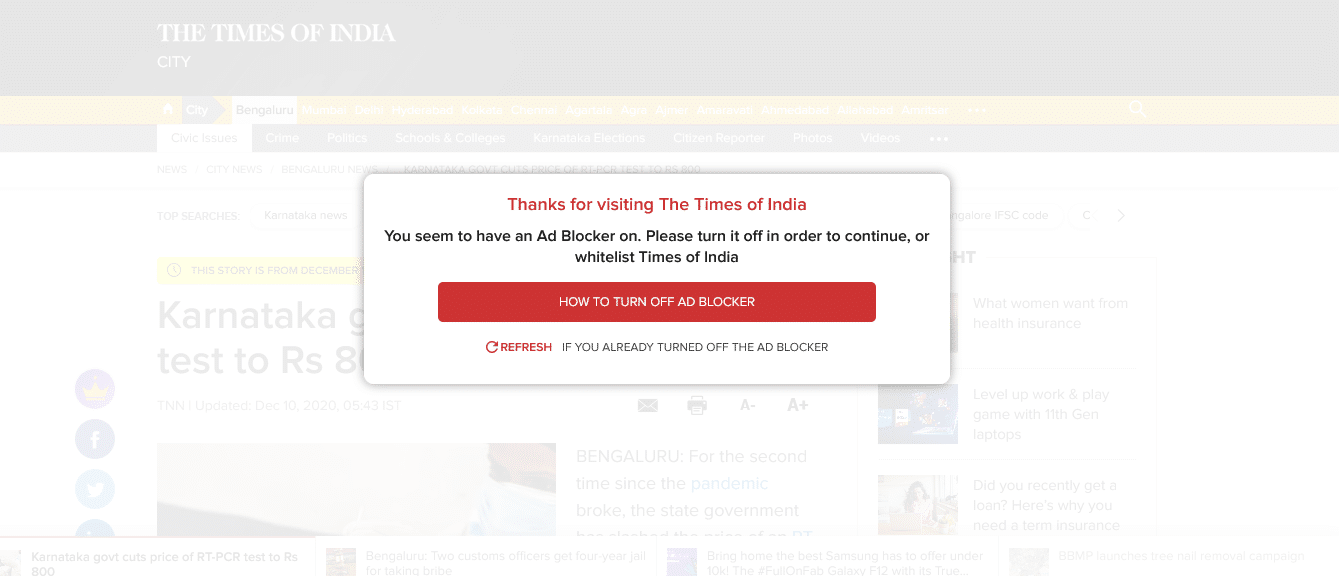
Using Google’s Funding Choices tool
Google’s Funding Choices tool helps in reducing the impact of ad blocking software. The tool asks your users to turn off their ad blockers or pay after they read a certain number of articles on your site.

Use AdBlock Recovery Technology
Adblock revenue recovery technology is a combination of methods that help you in protecting your ads and content from ad blockers. It also allows you to offer your readers a value exchange for access control to your content such as donations, email or social signup, paid subscriptions, and more. Leveraging ad recovery solutions will help you in optimizing user experience, getting higher CPM’s and ARPU, and developing deeper connections with visitors.
One such technology is Ad reinsertion. Through this technique, your ads can be shown to your visitors even if they are using any ad blocking technique on their mobile. You can either reinsert the original ad or replace the original slot with a more acceptable ad.
What’s Next?
Today, mobile ad blockers have become a great deal for online publishers. Of course, you can’t solve this issue in just one go and have to experiment with one or more strategies that we have listed to reduce its impact. You have to analyze and understand the user’s behavior, and then choose the right ad formats and the right number of ads.
That is what we help our publishers with. We recommend our publishers use the right number of ads on their mobile web pages to ensure a better user experience. Having an ideal number of ads with the right (non-intrusive) formats will allow the reader to be more engaged with your site.
For more tips and insights on the programmatic industry, subscribe to our Adtech Insider newsletter.























